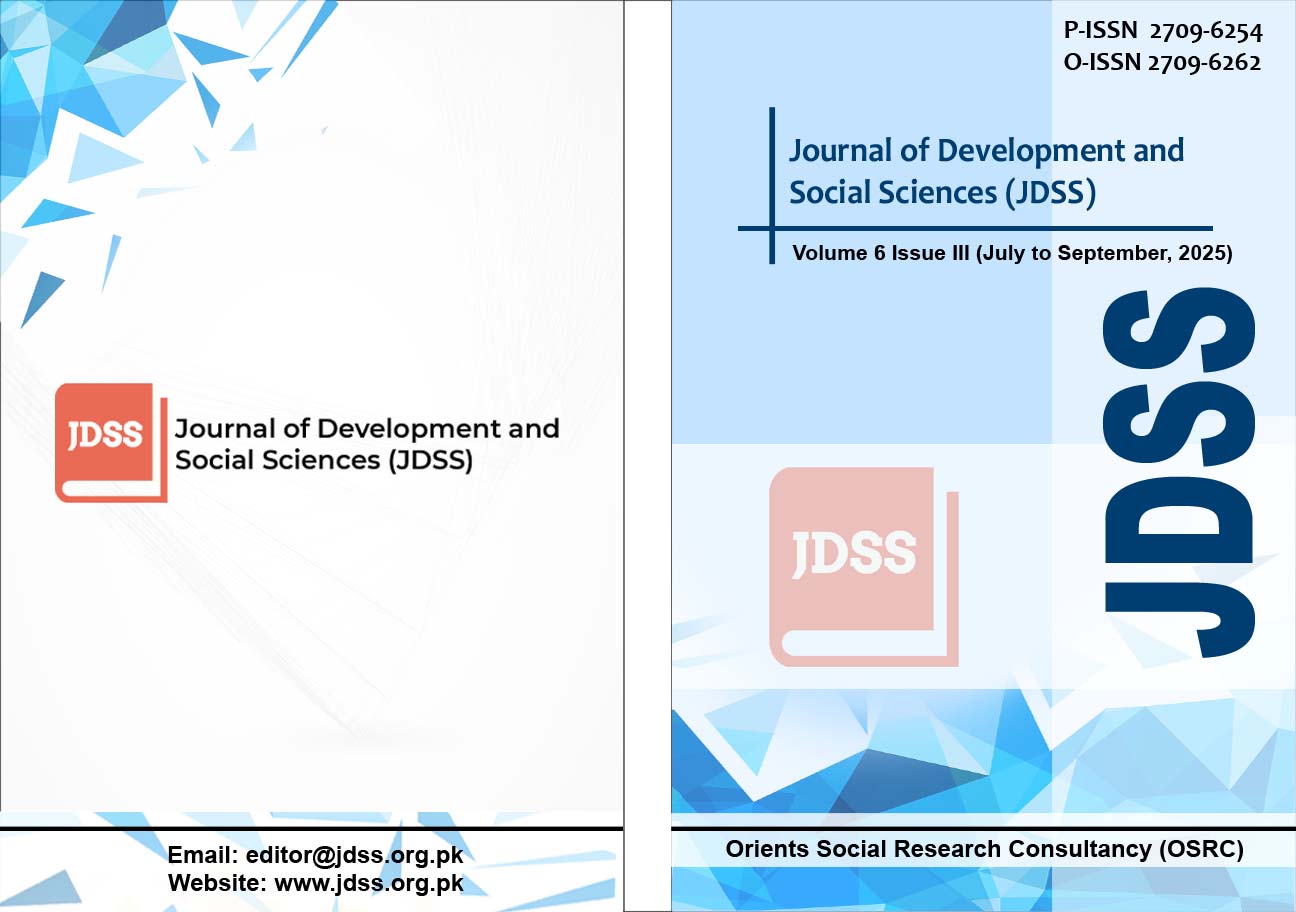Application of ICT Resources by Prospective Teachers: A Qualitative Perspective
DOI:
https://doi.org/10.47205/jdss.2025(6-III)24Keywords:
Information Communication Technology, Prospective TeachersAbstract
Research indicates that utilization of computer technology was under discussion across a prolonged timeframe, but there was very little information. The objective of the study was to explore the utilization of digital resources by prospective educators, investigate the role of ICT by prospective teachers, and identify the integration of ICT by prospective teachers. The study was designed using a qualitative research methodology. For the study, purposive sampling technique was used. Prospective Teachers were the population of the study. Datum was collected from 15 respondents using semi-structured interviews, and the data were analyzed through thematic analysis. The research identified that, the utilization of ICT in schools varied. A considerable number of formal institutions used it, while another significant group used it to a limited extent. A smaller number of schools were reported to be fully embracing the technology in all aspects of their operations. With the help of ICTs, students became more involved in classroom activities and their participation in various class works had increased. Therefore, the school administration should provide guidance on the pedagogical utilization of digital tools for effective instructions.
Downloads
Published
Details
-
Abstract Views: 300
PDF Downloads: 105
How to Cite
Issue
Section
License
Copyright (c) 2025 Journal of Development and Social Sciences

This work is licensed under a Creative Commons Attribution-NonCommercial 4.0 International License.

ORIENTS SOCIAL RESEARCH CONSULTANCY (OSRC) & Journal of Development and Social Sciences (JDSS) adheres to Creative Commons Attribution-Non Commercial 4.0 International License. The authors submitting and publishing in JDSS agree to the copyright policy under creative common license 4.0 (Attribution-Non Commercial 4.0 International license). Under this license, the authors published in JDSS retain the copyright including publishing rights of their scholarly work and agree to let others remix, tweak, and build upon their work non-commercially. All other authors using the content of JDSS are required to cite author(s) and publisher in their work. Therefore, ORIENTS SOCIAL RESEARCH CONSULTANCY (OSRC) & Journal of Development and Social Sciences (JDSS) follow an Open Access Policy for copyright and licensing.







